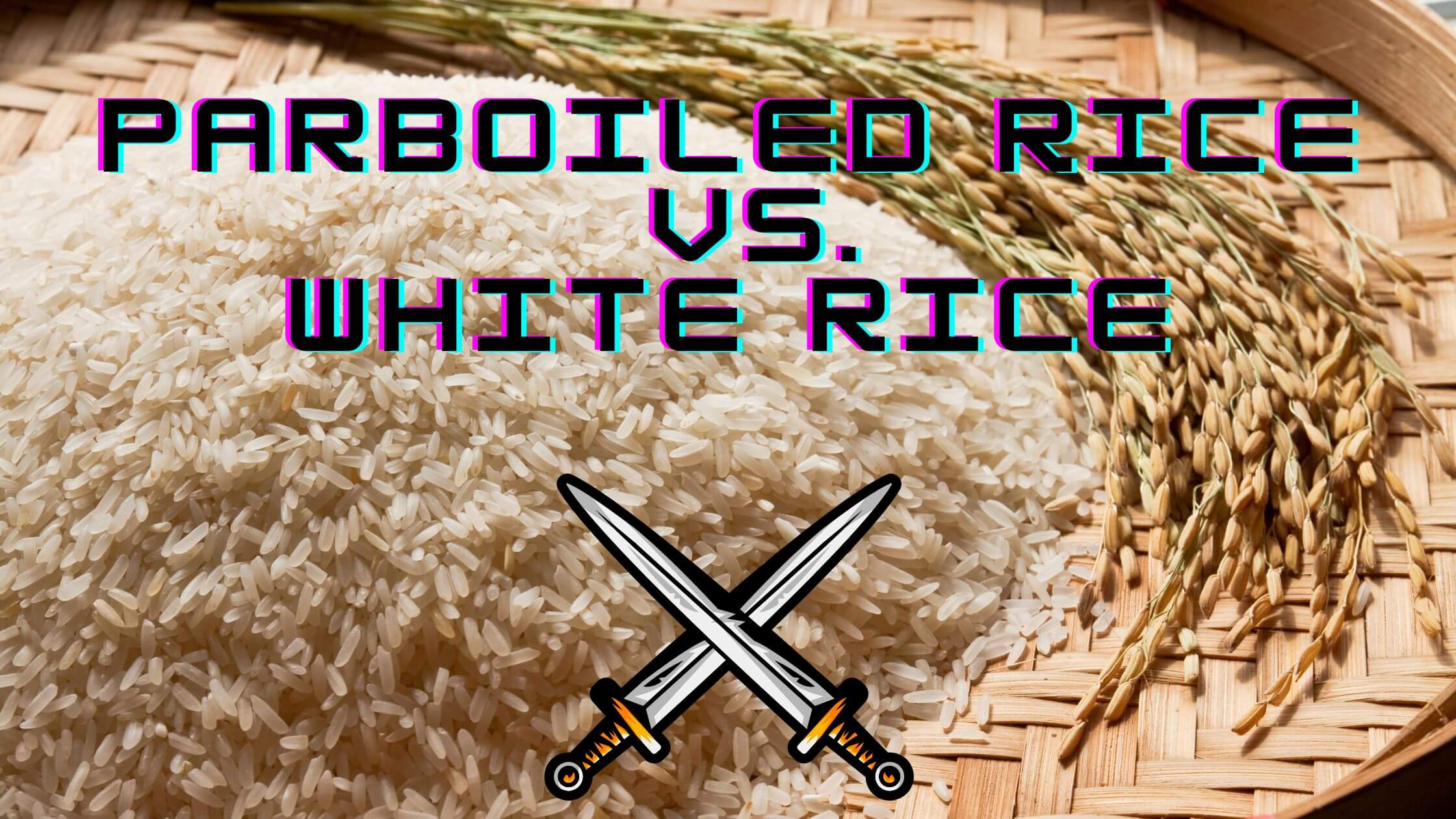It is no longer a piece of news that rice is the most consumed food globally. Also is not unknown that there are at least 120.000 varieties of rice markets in all cultures and culinary.
Every type has its values, importance, advantage, and disadvantage in human health. So if you are exploring the kinds of rice, the differences between varieties, and which one can be a better fit in terms of health, then this article is for you.
I am talking today about the traditional rice that you usually find in the supermarkets, the white rice vs. parboiled rice, which is another good variety out there.
Cooking Parboiled Rice Vs White Rice
The principles of rice cooking are pretty much the same easy for all types of rice. However, some different small techniques are used for some types of rice, as in the case of long-grain parboiled rice vs. white rice.
For the white rice, you need to put two measures of water for one measure of rice.
The parboiled rice needs more water, so for 1 cup of rice, you need to put two and ¼ water.
The safest way is to always check the packaging, as most of the time, they specify the measures, temperature, and time needed to cook.
Are There Any Benefits of Consuming White Rice Over Parboiled Rice?
All scientific research and online sources state that in a detailed comparison of parboiled rice vs. white rice, parboiled rice shows more advantages and has more vitamins, minerals, and macronutrients.
White rice has a little bit more carbohydrates, so if this is what you are seeking to complete your meal, that can benefit you.
Zinc is a mineral that is white rice is higher, as it has 7% of it, compared with parboiled rice, which has 5%.
Zinc is an essential mineral to fight chronicle diseases or wound healing.
Parboiled Rice Vs White Rice Nutrition
When talking about nutrition, the first difference between parboiled rice and regular rice is the number of calories.
A little contrast, but parboiled rice has fewer calories than white rice for the same amount of rice. For example, parboiled rice contains 123 calories, and white rice has 130 calories.
On the other hand, when talking about protein and fiber, parboiled rice has more.
In comparing parboiled rice vs. white rice, parboiled rice stays higher in iron and calcium, as it contains six times more calcium and nine times more iron.
Parboiled Rice Vs White Rice Cooking Time
White rice can be cooked faster as it needs no more than twenty minutes in medium heat.
While parboiled rice needs more time than that, this type of rice can take from twenty to thirty minutes to be fully cooked.
So if you are in a hurry for a quick meal, you know that you have to go for white rice between parboiled rice and white rice.
Parboiled Rice Vs White Rice Glycemic Index
The Glycemic index intends to measure the blood sugar level in the human body. You may ask why it’s essential to measure it.
First of all, to have a balanced diet and understand more clearly what we are putting in our bodies.
It’s known that high sugar levels in the blood are not the healthiest thing, and we have to keep it in control.
Another essential piece of information is that a high glycemic index can complicate the situation of patients who have diabetes. A high glycemic index makes it difficult to control diabetes.
It can even lead to causing diabetes. For this matter, you have to avoid food with a high glycemic index.
Now let’s see which is the level of the glycemic index of our products.
Parboiled rice has a shallow glycemic index, only 38. This makes this type of rice part of the category `low,` which means it is safe to consume.
Every food with a glycemic index from 1 to 55 is considered at low risk of affecting blood sugar levels.
On the other hand, not very good news for the white rice as the index is relatively higher. The GI for white rice is 72.
This score belongs to the `medium` category, which is getting relatively high, so if you have diabetes, you have to avoid this product at any cost.
Why Is Parboiled Rice Healthier Than White Rice?
Macronutrient charts clearly show that parboiled rice is a healthier and richer alternative than traditional white rice.
They have the same micronutrients, vitamins, and minerals present, but the quantity in parboiled rice is larger.
In the case of carbs and protein, the difference in quantities is slight. However, in other cases like vitamins B1 and B3, this difference can be three to eight times bigger.
Also, the glycemic index is lower in parboiled rice, which diabetic patients can consume, while white rice has a considerably high index.
Although considering that parboiled rice is better than white rice, but is not the best rice selection out there.
This place belongs mostly to brown rice, which has more health benefits. The most important effect is that it can fight heart diseases.
Is Parboiled Rice As Good As White Rice for Weight Gain?
Gain weight is related directly to the number of calories you put in your body.
Rice, in general, contains a large number of carbs, which contribute to gaining weight, but this all depends on the portion you are consuming.
Because both: parboiled rice and white rice have almost the same calories, a portion of 150 grams of any of them has around 180 calories.
Depending on the number of calories you want to take, you can decide the quantity.
Overall, I don’t think there is a significant effect on the gain weight of parboiled rice compared with white rice.
Is Parboiled Rice Better Than Regular Rice to Prevent Weight Gain?
Again, there is no significant difference between parboiled rice and regular rice to lose weight, as it’s a matter of quantity.
Both products can help you control your weight if consumed correctly and in quantity.
A portion of 150 – 200 grams per day of any rice can help you have a more balanced diet, but it’s also what else you consume with that.
Also, read:
Feel free to share your observations with me in the comments section!
Also, if you find the information in this post to be useful, be sure to share this post with your friends on Facebook, Twitter, and Pinterest!




